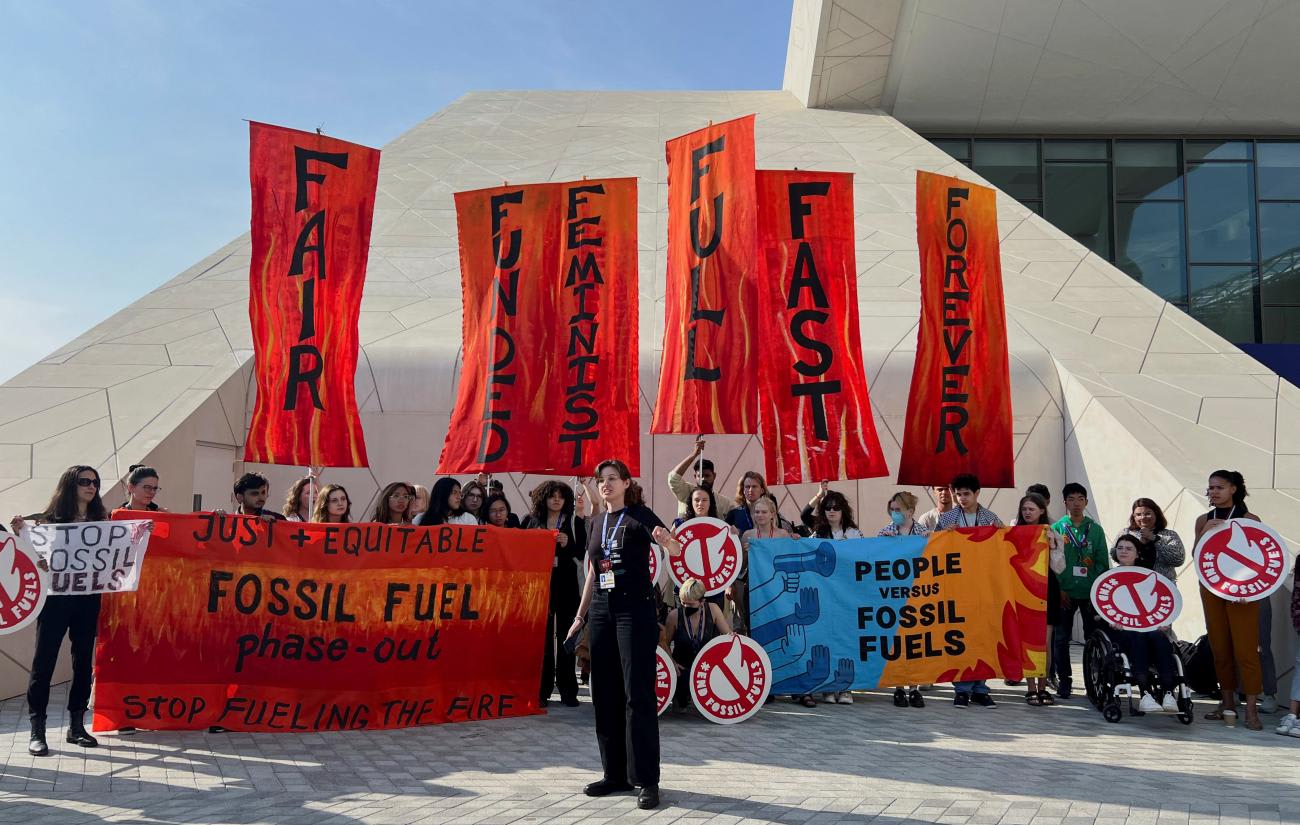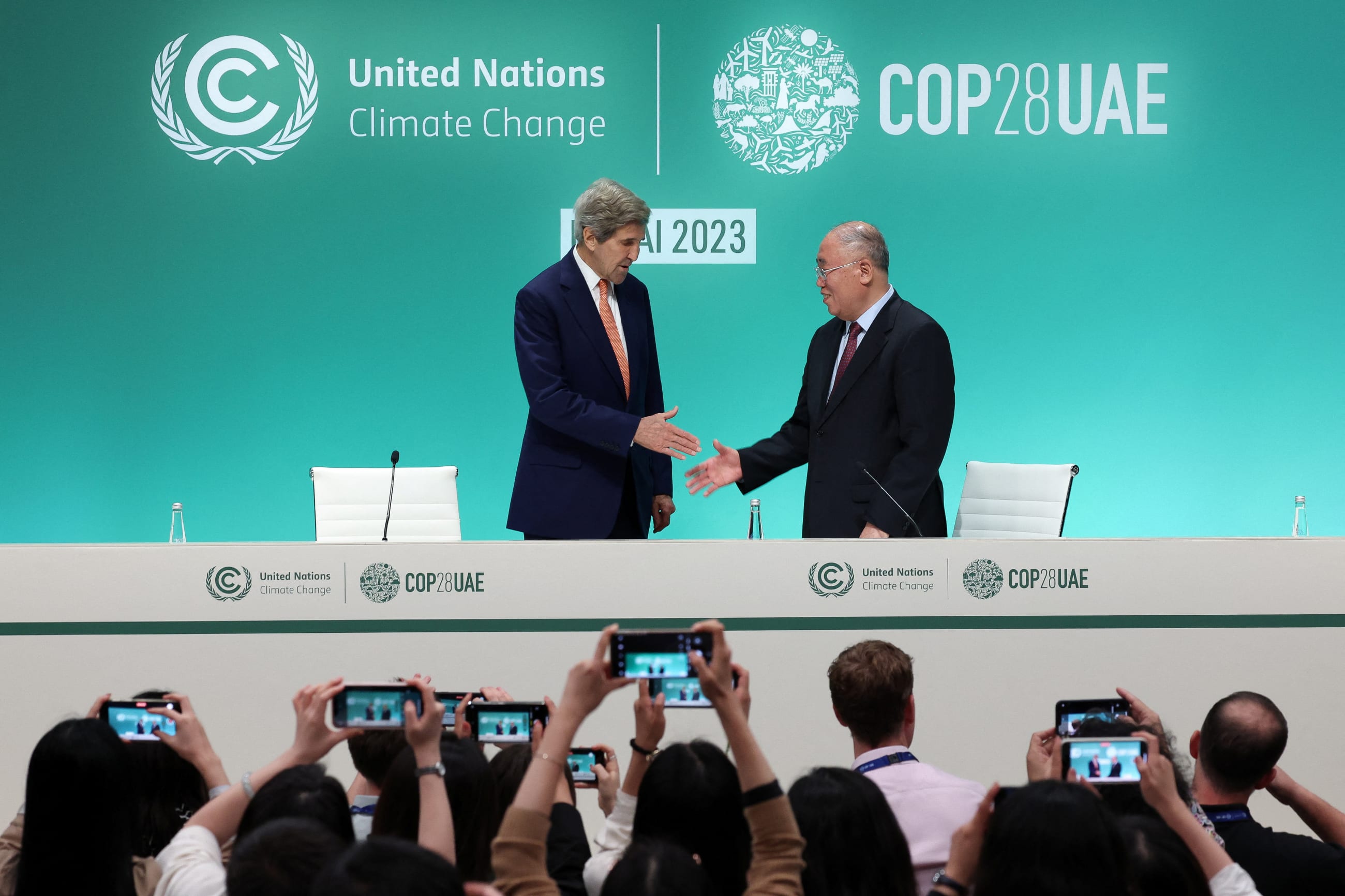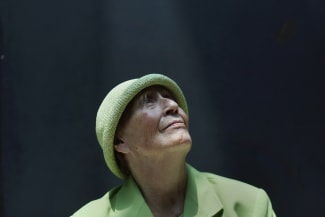History was made at the twenty-eighth Conference of the Parties (COP28) of the UN Framework Convention on Climate Change (UNFCCC) in Dubai. The most celebrated moment was the first-ever call for countries to contribute to "transitioning away from fossil fuels in energy systems, in a just, orderly and equitable manner" made in the Decision on the Outcome of the First Global Stocktake. The conference was also historic in elevating health in climate diplomacy, breaking the pattern of marginalization seen at previous conferences.
Health's new prominence arrives, however, as the scale, frequency, diversity, and costs of climate-related health threats increase, which exposes the magnitude of decades of diplomatic failures on mitigation and adaptation. The attention health received at Dubai is a dose of harsh realism, like the decision about transitioning energy systems away from fossil fuels. Although COP28 accorded health a place at the climate policy table, it made the road ahead for health responses to climate change more difficult.
For Better: A Day in the Sun—and More
In 1992, the UNFCCC defined the adverse effects of climate change to include deleterious impacts on human health, welfare, and socioeconomic systems. That foundational interest in the health dangers that climate change poses did not feature much in the first twenty-seven conferences of the UNFCCC's states parties.
Climate change has become the "greatest threat to human lives, health, livelihoods, and well-being in the 21st century"
COP28 was different. The COP28 presidency stated that climate change has become the "greatest threat to human lives, health, livelihoods, and well-being in the 21st century." For the first time, a COP held a Health Day, during which 110 health ministries attended the first-ever Climate-Health Ministerial, and at which 143 countries signed the first-ever Declaration on Climate and Health. Those events, and others, stressed the need to integrate the climate-health nexus into both climate and global health policies.
Such unprecedented visibility for health in climate diplomacy was bolstered by activities associated with social determinants of health. For example, 153 governments signed the Declaration on Sustainable Agriculture, Resilient Food Systems, and Climate Action to reduce climate change's impact on food producers, systems, and security. More than 200 nongovernmental organizations supported the Call to Action for Transforming Food Systems for People, Nature, and Climate. Signed by eighty countries, the COP28 Declaration on Climate, Relief, Recovery, and Peace identified the need to improve adaptation concerning disaster management, ecosystem protection, water systems, and early-warning capabilities.
The First Global Stocktake decision reflects the breadth of health-related issues addressed at COP28. It noted that the adverse effects of climate change are "being felt in every region across the globe" and that existing adaptation responses are "fragmented, incremental, sector-specific and unequally distributed across regions." Reflecting the UAE Global Framework for Climate Resilience, the decision sets adaptation targets for 2030 related to risk assessment, planning, implementation, and monitoring, evaluation, and learning. It also urges governments to take ambitious adaptation actions against—among other things—climate-related illness and death, water scarcity, food insecurity, poverty, biodiversity damage, and infrastructure vulnerabilities.

The COP28 presidency also worked with governmental, intergovernmental, and nongovernmental actors in developing Guiding Principles for Financing Climate and Health Solutions. The document asserts that health actions against climate change are jeopardized by "insufficient, fragmented, and inaccessible financing." The principles for financing climate-and-health solutions include accelerating transformative solutions to save lives and embedding climate-health goals across financing strategies.
In sum, COP28 heightened the importance of the climate-health nexus, integrated health concerns across the adaptation agenda agreed at the conference, and stimulated collaboration on climate-health financing. Those results should help mobilize health policymakers, systems, experts, and advocates against the adverse health effects of climate change.
For Worse: Mitigation and Money Woes
Blunt statements in conference documents about the health threats that climate change causes highlighted that, despite nearly thirty years of climate diplomacy, mitigation of greenhouse gas emissions remains dangerously inadequate. COP28 convened in a year that saw global emissions hit a new high and that was the hottest in recorded history.
Even fully implemented national pledges could not achieve the preferred goal in the Paris Agreement on Climate Change
The First Global Stocktake decision observes that emissions in 2030 "are projected to be 5.3 per cent lower than in 2019" if current national emission-reduction pledges are implemented. That outcome is improbable because the decision identifies a significant gap between pledges and performance. But even fully implemented national pledges could not achieve the preferred goal in the Paris Agreement on Climate Change of limiting global warming to 1.5 degrees Celsius over preindustrial levels. The decision asserts that meeting that goal "requires deep, rapid and sustained reductions" in emissions of "43 per cent by 2030 and 60 per cent by 2035" from 2019 levels.
COP28 yielded no strategy for reducing emissions that quickly, severely, and sustainably. The First Global Stocktake decision calls on countries to contribute to mitigation efforts, including tripling global renewable energy capacity by 2030, accelerating the phase-down of unabated coal, accelerating the use of carbon-capture-and-storage technologies, and transitioning away from fossil fuels in energy systems in a just, orderly, and equitable manner.
Those nonbinding calls for voluntary mitigation contributions conditioned on national needs did not impress experts who believe that the 1.5-degree Celsius target is no longer achievable, that holding global average temperatures below the 2-degree Celsius limit in the Paris Agreement is in jeopardy, and that staying under a 3-degree Celsius increase would be a fortunate outcome.
The continued inadequacy of mitigation actions will worsen existing—and create new—health threats, lengthen the timespan over which health adaptations are required, and increase the likelihood that irreversible changes to the climate will necessitate more disruptive and expensive actions to protect health. The Intergovernmental Panel for Climate Change has warned that crossing the 1.5-degree and 2-degree Celsius thresholds could make resilience for people, health systems, and social determinants of health more difficult to achieve around the world and, in many places, impossible.

The mitigation crisis has implications for the climate-health nexus. COP28 elevated health concerning adaptation, but that prominence had no discernible impact on shifting mitigation negotiations toward deep, rapid, and sustained emission reductions. Instead, overburdened and increasingly politicized public and global health systems now confront climate change as well as unfinished, under-resourced efforts against daunting challenges, including pandemics, noncommunicable diseases, antimicrobial resistance, social determinants of health, disinformation, and humanitarian assistance.
Unfortunately, the challenge gets worse when climate finance is considered. Developed and developing countries require significant resources for mitigation and adaptation. According to the UAE Leaders' Declaration on a Global Climate Finance Framework, "greening the global economy by 2030" will require $5 to $7 trillion annually. The First Global Stocktake decision highlights that developing countries need an estimated $215 to $387 billion annually for adaptation through 2030.
But the gap between needed and available money for mitigation and adaptation is enormous, especially for developing countries. A similar gap exists in the loss-and-damage fund that COP28 operationalized to compensate developing countries for economic and other damage caused by climate change. As seen during COP28, the climate-health nexus centers on adaptation, which makes alarming the estimate from the UN Environment Program that the current adaptation finance gap runs between $194 and $366 billion annually.
In sum, COP28 did not transform the scale, speed, and sustainability of mitigation actions, increasing the likelihood that global temperature thresholds considered significant for human health will be breached. That probable outcome underscores the need across decades for more health adaptation capabilities, particularly in developing countries, an imperative for which foreseeable future funding is nowhere close to what is needed.
For the Future: The Heat Is On
Climate change constitutes a threat to humanity that requires mobilizing health experts and systems to counter. COP28 accepted that proposition and provided a platform for planning how to deploy health concepts and capabilities to strengthen adaptation. That choice was not visionary. The adverse effects of climate change on health have simply become too obvious, pervasive, and pernicious to ignore. The choice was also not transformational because the effectiveness of health adaptation will depend on breakthroughs on mitigation and finance, which the conference did not deliver.
Fortunately, poorly resourced health professionals have experience facing crises the root causes of which they do not control. Those skills will be valuable in an increasingly hot-and-bothered world.













